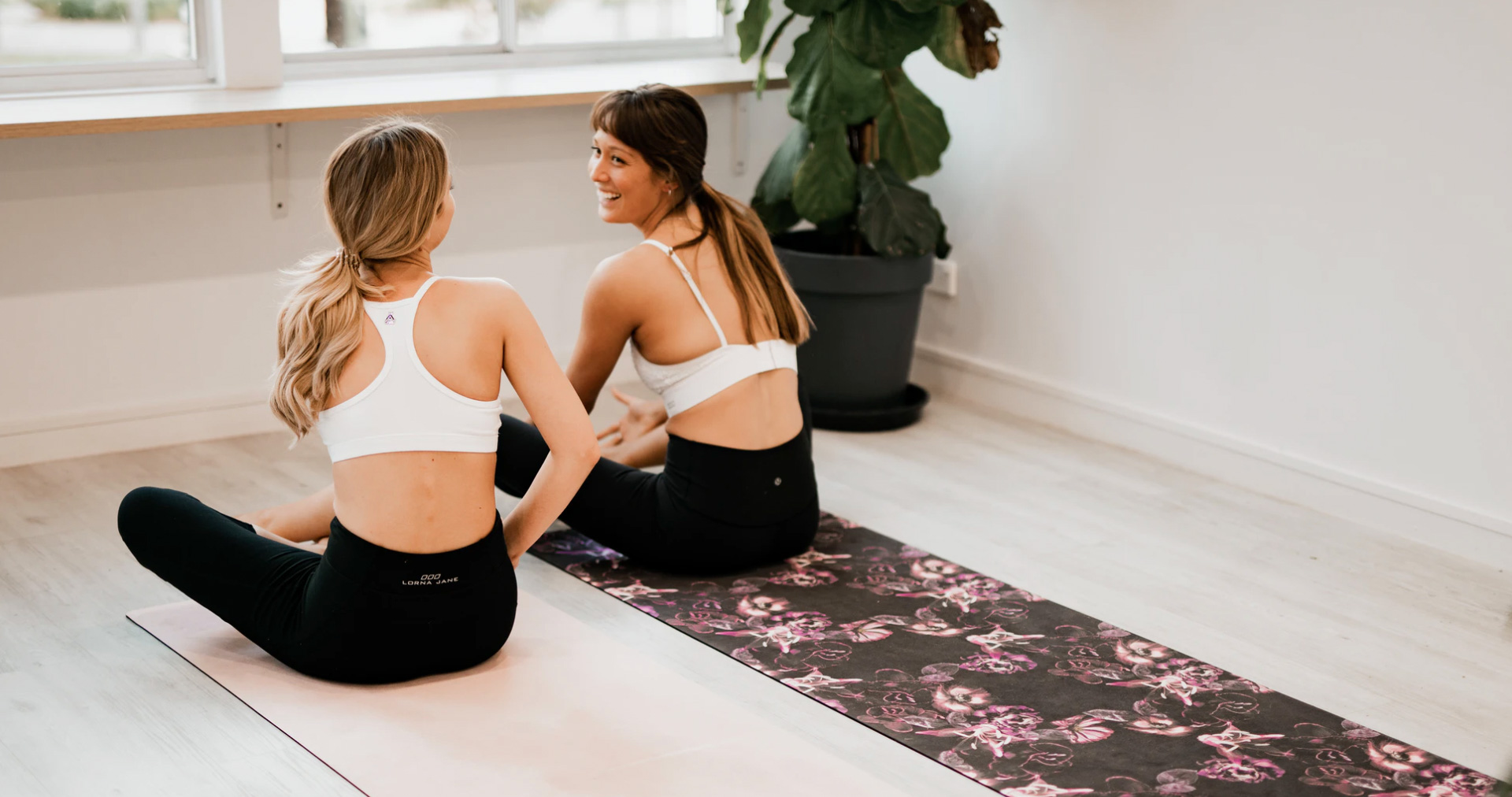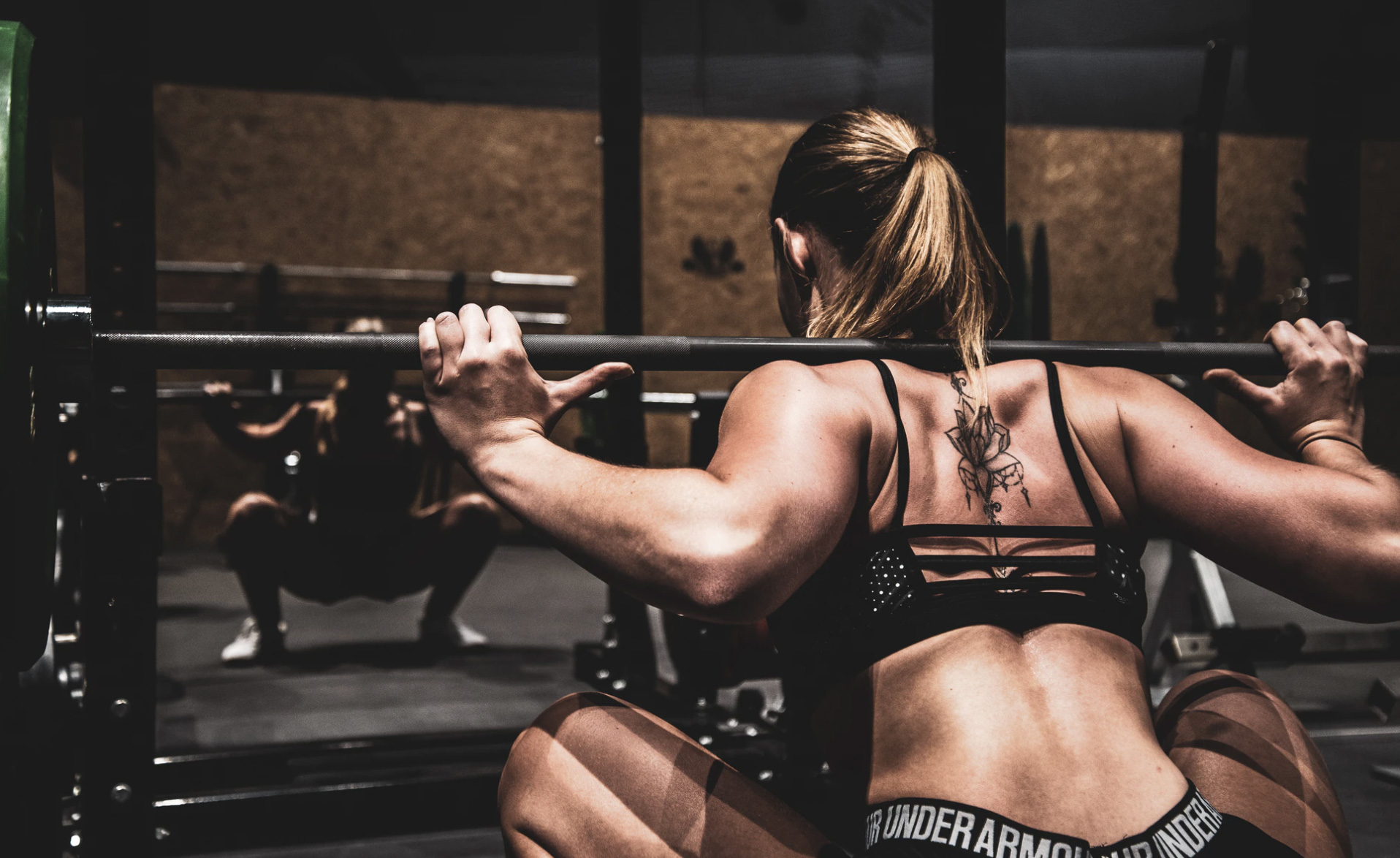How to Exercise to Keep Your Hormones Balanced

With all the competing information out there, it can be confusing and overwhelming to figure out the right way for you to exercise. And that goes doubly if you’re a woman with imbalanced hormones or other period problems like PMS, acne, irregular cycles, thinning hair, cravings, and more.
As a hormonal health expert, I see exercise as an enormous part of helping my clients achieve overall hormonal balance. But I often find that women fall into one of two groups:
- They push themselves too hard by _over_exercising, and their hormones end up suffering for it. This is usually common in women with irregular or missing periods, afternoon fatigue, and a “tired but wired” feeling at night.
- The other group gets inspired to exercise, has a promising start, and then ends up burned out, disappointed, and back on the couch. This can often look like mood swings, irregular cycles, acne, unwanted facial and body hair growth, thinning hair, and heavy periods.
While every person has different needs, and it’s best to work with a professional to find the right routine for you, there are a couple of helpful tips you can use to establish a consistent exercise routine you can actually stick with, and which will support more balanced hormones.

Tip #1: Make it something you like enough to keep coming back.
If you hate spin class, don’t force yourself to go just because you think you should!
How many times have you set a goal to “work out more!”, then started strong for a week or two, before eventually fizzling out?
I’ll let you in on a little secret: when it comes to working out, consistency is key.
A 2-week running challenge is great, but regular exercise helps to regulate your cycle, increase energy levels, improve sleep quality, improve fertility, increase self-esteem, and reduce anxiety and depression. And 2 weeks of intense exercise isn’t going to give you that — but consistent movement can.
And the only way you stay consistent, is by picking something you enjoy.
It doesn’t matter if you think spin class will get you the best results if you spend more time dreading than enjoying it, or worse, you never actually go.
The key here is finding something you actually like doing, and scheduling it in regularly.
Start with small, doable steps — like going for a walk or streaming a yoga class 3 days a week (doesn’t have to be for long, just get out there).
Pick specific days and times, and put it on your schedule to stay consistent. Have a loved one hold you accountable for bonus points.
Start realistically. Any increase in regular movement is better than no movement. Even better than that is consistent movement.

Tip #2: Don’t overdo it.
This may sound counterintuitive, especially if you’re a woman, since we’ve spent most of our lives taking in the message “sweat more, eat less, and you’ll be desirable.”
While there are many things wrong with that marketing message, I want to focus on the “sweat more” part here.
See, when it comes to balanced hormones, more does not equal better.
In fact, one common mistake I see among my hormonal health clients is _over_exercising. For example, losing your period while training for a marathon is a good sign that your body is crying out for a change.
That’s because overly-intense exercise can cause our bodies to release the stress hormone cortisol, which messes with the hormones that keep our bodies happy, healthy, and in check.
The threshold is different for everyone, but if you’re already experiencing symptoms like irregular or missing cycles, acne, intense mood swings, and PMS, hair loss, afternoon energy crashes, or feeling “tired but wired” at night, it’s a good sign your hormones might need a break from the cortisol and little more self-care.
This is particularly true if you have a hormonal imbalance like PCOS, which likely means you already have higher levels of cortisol running freely through your body.
There’s a difference between working out for your health and enjoyment, and running yourself ragged.
Odds are, you’re already juggling the demands of work, family, relationships, and so much more. Add the pressure to over-exert yourself, and your body ends up paying the price.
Start thinking of it like this: “exercise smarter, not harder.”
So at this point, you may be scratching your head asking, “so what should I be doing for exercise?”

Tip #3: Aim for a mix of cardio and resistance training.
The answer:
Find a mix of cardio (aerobic activity) and resistance training (anaerobic activity) that you enjoy. This can look like morning walks paired with an at-home bodyweight circuit. Or yoga mixed with lifting weights.
Think of movement as another way you can nourish your body, beyond food.
Resistance training helps build lean muscle mass, increase metabolism, protect our joints, and maintain flexibility and balance, while aerobic activity (cardio) improves our cardiovascular health, releases feel-good hormones, and increases metabolism. Both are a great way to improve your health and lose weight (if necessary) when done in balance.

Resistance training is generally very safe for hormonal balance. But a good rule to keep hormones happy while doing cardio: Keep it short and intense, or long and gentle.
Remember, a fair amount of the prevailing wisdom in the exercise world is based on studies done on men and postmenopausal women. The problem is, women are not small men.
In our reproductive years, we have a multi-week hormonal cycle that impacts our energy from week-to-week, while men operate on a 24-hour hormonal cycle. So while men tend to thrive on more intense workouts that they can quickly recover from, a woman with imbalanced hormones may find that the same exercise routine leaves her body feeling depleted, imbalanced, and holding onto unnecessary weight to protect itself.
That’s not a bad thing — it just means it wasn’t right for her, and there’s a better system out there.
That’s one of the many reasons I work directly with my clients to create a tailored exercise program that works for them and their hormones.
The Big Takeaway: Exercising for hormone balance means moving consistently, making sure not to overdo it, and aiming for a mix of cardio and resistance training.
Regular exercise changes our body composition, swapping excess fat for lean muscle that not only makes us feel better physically, but can also improve our self-image if weight is something we’re struggling with.
“Sweat more, eat less” is not the foolproof formula to fitness we’ve been taught to think it is. Pick activities you like to do, preferably a mix of cardio and resistance training, and stay consistent.
If nothing else, make sure you’re lapping everyone on the couch.
If you’re struggling with some of the symptoms I mentioned above, be sure to email me at samantha@bewellandwander.com for an individualized assessment that will get you back on track.
Sam is a Nutritional Therapist and Hormonal Health Coach who specializes in using food, movement, and self-care to help women and menstruating people have better periods, and manage imbalances like PCOS. She’s a firm believer that bad periods are not a life sentence, and that just because symptoms are “common” doesn’t mean they’re “normal.” She teaches women all over the world how to understand their cycles, tap into the benefits of each changing phase, and harness their hormones for good. She helps them feel at home in their bodies (rather than confused, resentful, or frustrated) so they can spend their time on what matters. As a digital nomad, Sam works with her clients online across the world, while traveling full time.
Want to learn more about eating for hormone balance? You can find her on Instagram at @bewellandwander or email her at _Samantha@BeWellandWander.com _